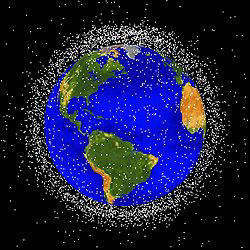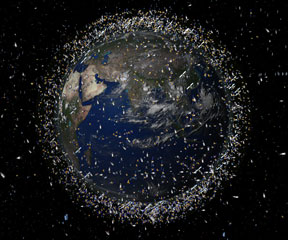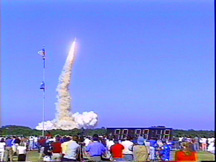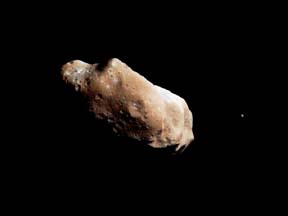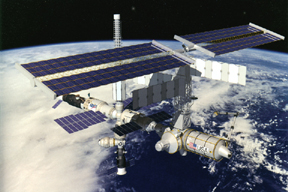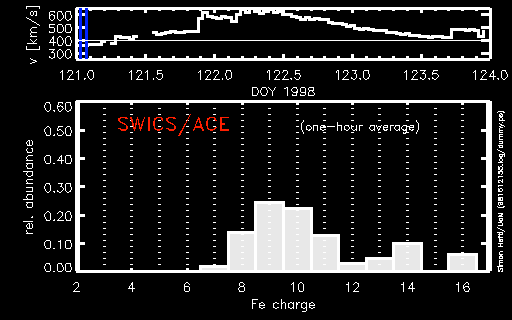Click on image for full size
Courtesy of NASA
Space Debris Update
News story originally written on May 9, 2002
Whether on Earth or in Space, human activity creates waste. Like the Earth's environment, the space environment is getting more and more cluttered. There are currently millions of man-made orbital ruins that make up "space junk". Unfortunately, the past 45 years of space exploration have generated a lot of junk. Orbital debris includes things such as hatches blown off space modules, paint fragments from the space shuttle, or satellites that are no longer in use.
Most space junk is very small (for example, paint flecks). But there are over 7,500 objects orbiting Earth that are bigger than a baseball. These objects are tracked by ground-based radars.
Man-made debris orbits at a speed of roughly 17,500 miles/hour (28,000 km/h)! Think of the damage even a small speck of paint could do if it hit a spacecraft at such a high speed! Even an object as small as small as a grape has enough kinetic energy to permanently hurt a medium-sized spacecraft!
There are about 500 working spacecraft, including the International Space Station (ISS), that must be protected from space debris. Mostly, they are protected by shields that are not hurt by space junk. NASA tested different types of shielding in the Long Duration Exposure Facility (LDEF). The LDEF was put in orbit April 1984 by the Shuttle Challenger. It was collected 5.7 years later.
Besides having shielding from space junk, a spacecraft can move out of the way to avoid getting hit by debris. Currently, the Center for Orbital and Reentry Debris Studies (CORDS) helps space mission controllers plan so as to avoid impacts between their spacecraft and space junk.
Clearly, space debris is a danger to operating spacecraft in orbit around Earth. Is space junk a danger to life here on Earth? Though pieces of space junk have been known to fall to Earth from Oregon, U.S., to Uganda, Africa, falling space junk isn't likely to endanger humans or other life on Earth. Most space debris is small enough that it burns up in the atmosphere of Earth. Otherwise, it usually falls into the ocean which covers 2/3 of the planet. The North American Air Defense Command (NORAD) and United States Space Command (USSPACECOM) do monitor man-made objects in space using radar. They also track when space debris falls into the Earth's atmosphere or onto Earth.


